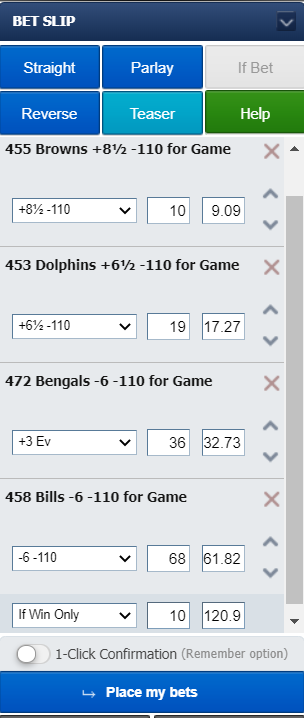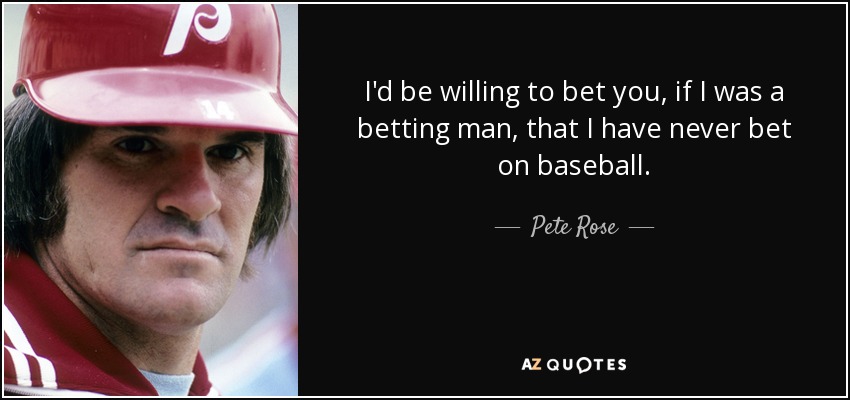If Bet
An if bet is a combination of two or more wagers, where the result of each wager determines whether or not the subsequent wagers are actually placed. This actually sounds a little more complicated than it is. Basically, you make multiple selections at whatever stake. JavaScript must be enabled in order to view this page. Neopets.Com - Virtual Pet Community! Join up for free games, shops, auctions, chat and more! This means that for every dollar you bet, you get your stake back plus 20 cents. Now, we support responsible betting, but let’s assume you’re wagering more than $1. If you bet $100, you get $120: your $100 stake + $20 profit. Below, the calculation is similar to, but not the same as, the American odds equation. Profit = (Stake x Odds) – Stake. 13 synonyms of bet from the Merriam-Webster Thesaurus, plus 30 related words, definitions, and antonyms. Find another word for bet. Bet: the money or thing risked on.
If bets and reverse bets are two of the more complex sports
wagers you can place, but they aren’t actually too difficult to
understand once you’re familiar with the concept. Although we
consider these to be advanced wagers, we do think it’s worth it
for beginners to learn how they work, because they do offer some notable
advantages.
These bets are similar to parlays, in that they involve
making multiple selections, but they are lower risk and can
still offer a return even if you don’t get every selection
right. They can be great options if you want to bet on the
result of more than one match without risking too much of your
bankroll.
We’ve explained more about these wagers below, and provided
some examples of how they work in practice.
How If Bets Work
An if bet is a combination of two or more wagers, where the
result of each wager determines whether or not the subsequent
wagers are actually placed. This actually sounds a little more
complicated than it is. Basically, you make multiple selections
at whatever stake you choose. Your stake is then placed on your
first selection. If your first selection loses, you lose your
stake and the rest of the wager is cancelled.
If your first selection wins you get paid out, but with an
amount equal to your initial stake deducted. This amount is then
placed again on your second selection. If the second selection
wins you get paid out minus the original stake which is
then placed on the third selection. If the second selection
loses, then the rest of the wager is cancelled.
The number of selections you can include in an if bet will
vary from one bookmaker to another, but it’s typically between two
and six. The basic principle is always the same regardless of
how many selections you make. If you make two selections, then
the second selection only comes into play if the first selection
wins. If you make three selections, then the third selection
only comes into play if the first two selections win.
The best way to show exactly how if bets work is to use a
simple example using real betting markets.
Example If Bet
In this example we’ll use an if bet using two selections,
based on point spread betting in football. Take a look at the
following two betting markets.
-110
-110

Now let’s say that you decided to place an if bet on the two
favorites (the Steelers and the Broncos) to cover the spread,
staking $110. You make the Steelers your first selection and the
Broncos your second selection. $110 is deducted from your
account.
In this scenario, there are four possible combinations of
results, as follows.
- Steelers Cover, Broncos Don’t
- Both Teams Cover
- Neither Team Covers
- Steelers Don’t Cover, Broncos Do
Let’s look at what would happen to your wager for each set of
results.

At the point that the Steelers cover, you are due $100 in
winnings. You don’t get your initial $110 back though, because that
is rolled over to the Broncos. With the Broncos not covering,
you lose that $110. You still get the $100 return from the
Steelers selection though, so your net loss is just $10.
The Steelers covering gives you $100 in winnings, with your
initial $110 stake rolled over to the Broncos. The Broncos
covering gives you another $100 in winnings, plus your initial
stake back as there are no more selections. You’ve made a $200
profit.
At the point that the Steelers fail to cover, the rest of the
bet is cancelled. You are out your initial $110 stake. The fact
that the Broncos also fail to cover is irrelevant, because you have
no money riding on it.
Again, the rest of the bet is cancelled when the Steelers
fail to cover. Therefore the Broncos result is irrelevant again.
Even though they’ve covered, you have no money riding on the
game so you are still out your initial $110.
Order of Selections
The example outlined above not only illustrates how an if bet
works, it also highlights one fundamentally important aspect of
them. The order of your selections can affect the outcome of the
wager. In the last scenario listed above (Broncos covering,
Steelers not), you’ve lost your entire initial stake even though
one of your selections was a winner. This is because the second
selection didn’t come into play.
Had you picked the Broncos as your first selection, you would
have got the $100 winnings from that selection. You would still
have had an overall loss of $10, as you would have lost the $110
being rolled over to the Steelers, but that’s significantly
better than losing $110.
Please note that even though the Broncos were playing after
the Steelers, you still could have picked the Broncos as your
first selection. The order in which the matches are played
doesn’t matter for the purposes of an if bet, because the final
outcome of the bet is calculated once all relevant matches are
played.
The fact that the order of selections can affect the outcome
of an if bet brings an extra element of luck to these wagers,
which can be avoided by the use of reverse bets.

What Are Reverse Bets?
Reverse bets are if bets that work in all possible
directions. They are essentially a combination of each of the
possible if bets on any given number of selections, and as such
they eliminate the possibility of losing out on returns due to
the order of selections.
In the if bet example we just explained there were two
selections. The first selection was the Steelers, and the second
selection was the Broncos. If the Broncos covered the spread,
but the Steelers failed to do so, we showed that you would have
lost your entire wager.

This could have been avoided by placing a reverse bet instead
of a single if bet. In this instance, a reverse bet would have
basically combined an if bet with the Steelers as the first
selection and an if bet with the Broncos as the first selection.
This would have guaranteed you some money back if at least one
of your selections won.
Please be aware that when you place a reverse bet, your
initial stake is multiplied by the number of if bets it
combines. A reverse bet with two selections, as we’ve just
shown, is two if bets. One with Team A as the first selection
and Team B as the second selection, and one with Team B as the
first selection and Team A as the second selection. So, if you
placed a $55 reverse bet you would be staking a total of $110 –
$55 on one if bet and $55 on the other.

The following table shows how many if bets are included in a
reverse bet based on the number of selections. Note that the
number of if bets increases exponentially as the selections
increase. It’s worth bearing this in mind when placing reverse
bets, because it means your stakes increase exponentially too.
If Betty Got Pregnant
| Number of Selections | Number of If Bets |
|---|---|
| 3 | 6 |
| 4 | 12 |
| 5 | 20 |
| 6 | 30 |
Reverse If Bet
If bets and reverse bets can be very useful if used in the
correct way and for the right reasons. They are particularly
attractive as an alternative to parlays if you are willing to
sacrifice some of the potential returns for a lower overall
risk.